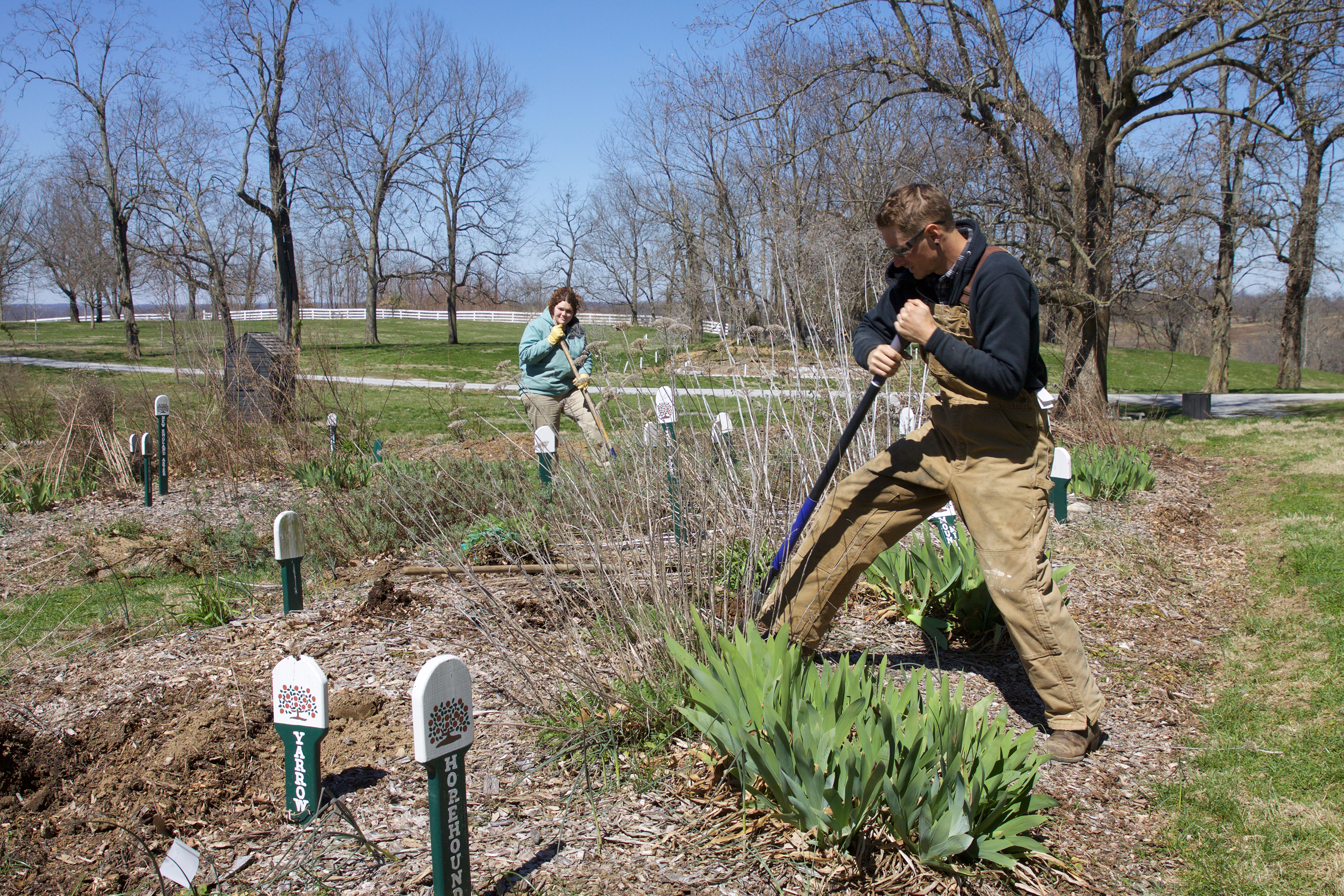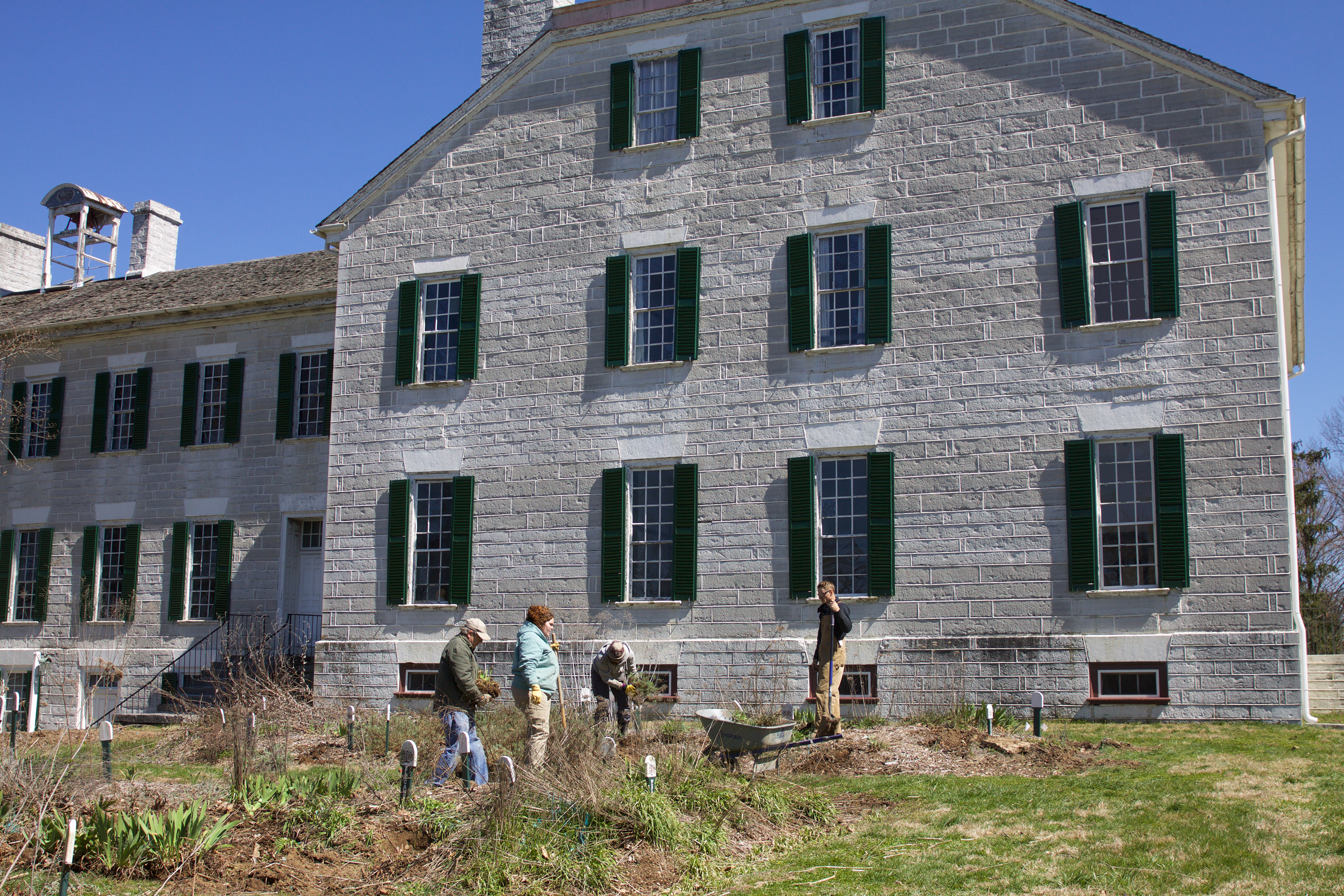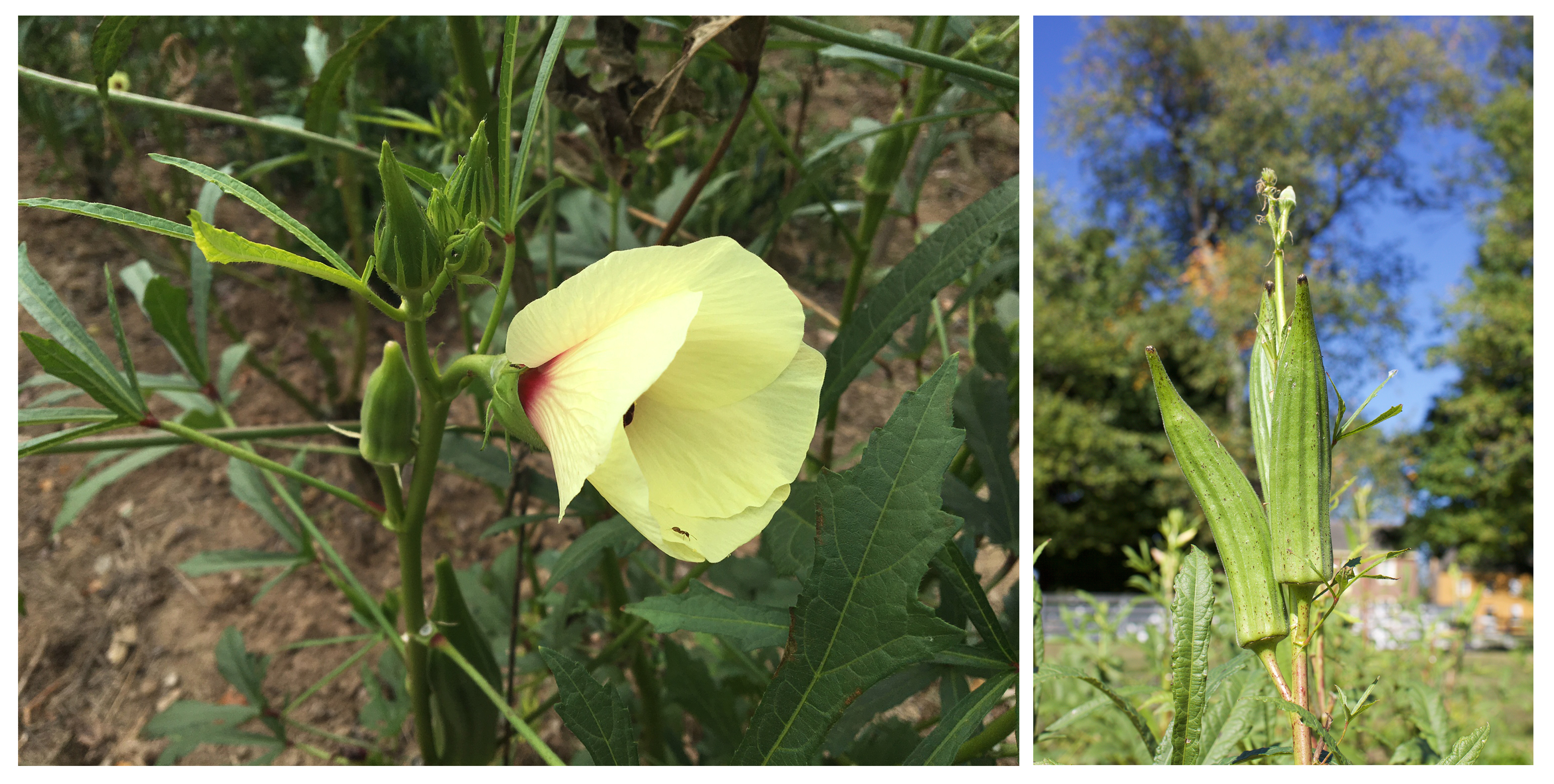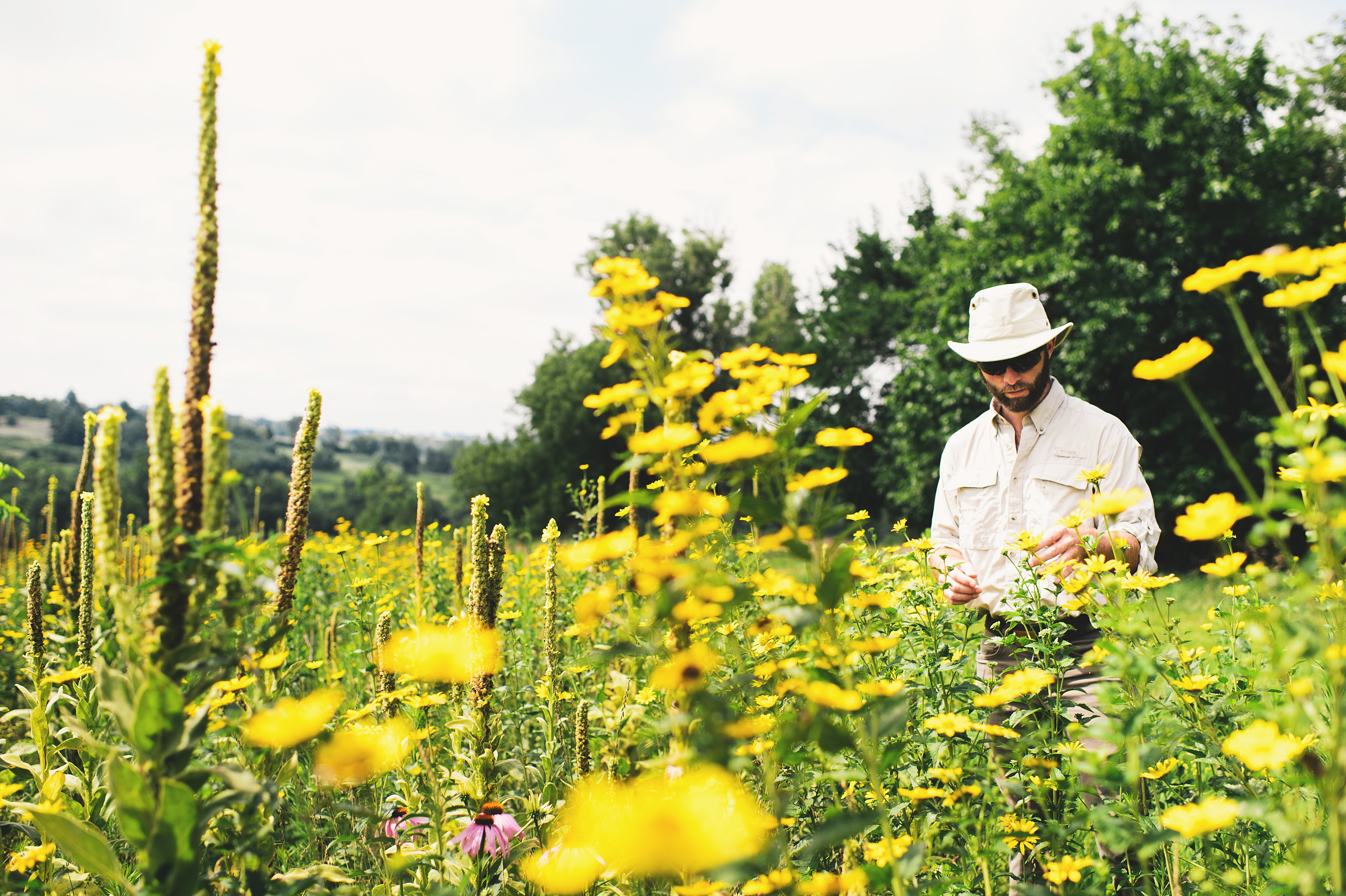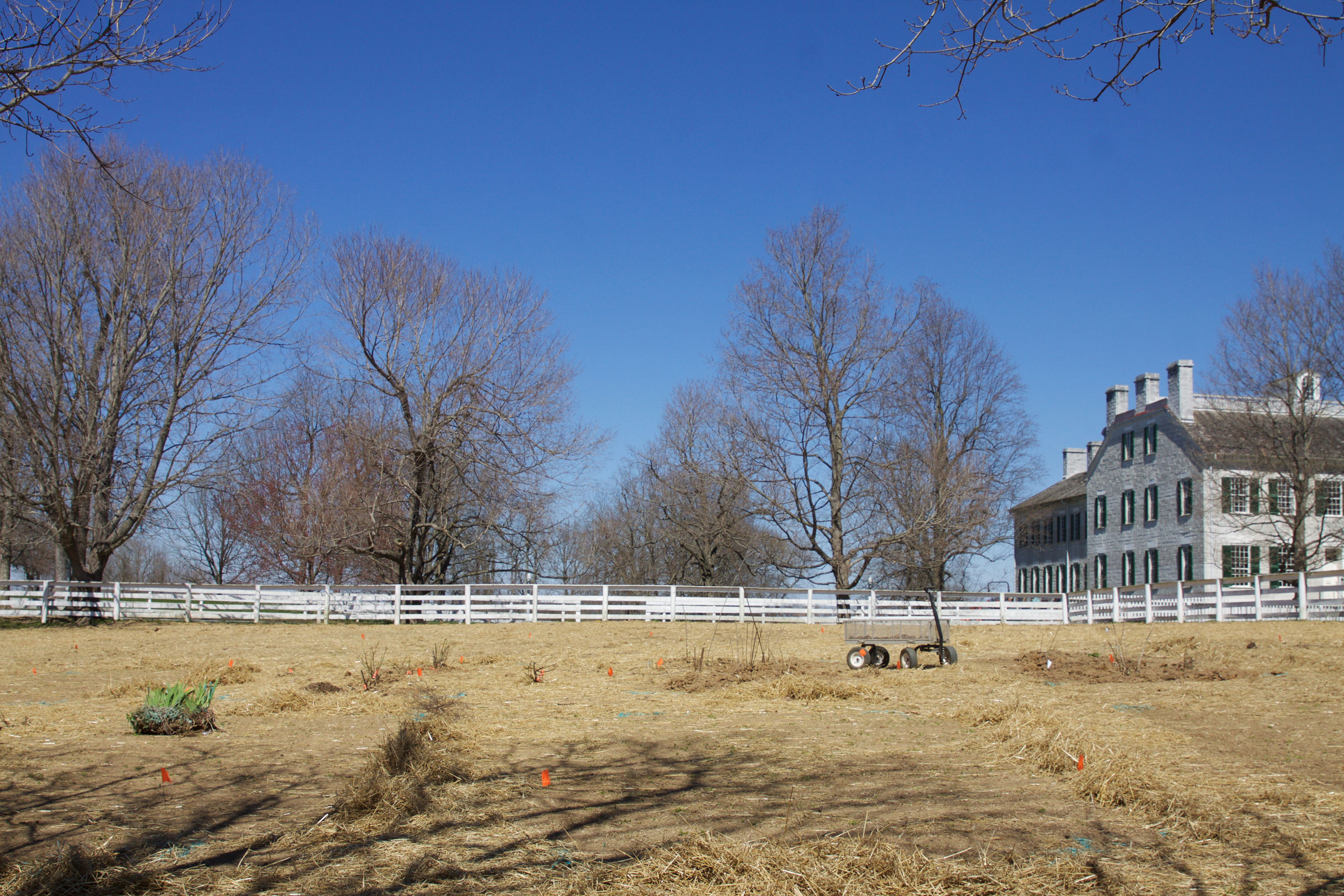
The Discovery Garden
With big changes coming to the Centre Family Dwelling this summer, we had to find a new home for our herb garden. Thanks to a grant from the
Whole Kids Foundation and a partnership with the
Garden Club of Lexington, we were able to turn the project into something better all of our guests can enjoy. The grant will fund a shaded wheelchair-accessible program area, as well as storage for program supplies, to help us enhance our programs on herbs and native plants important to people and wildlife. This project will also reestablish the garden as a monarch waystation, as we are adding several varieties of milkweeds that are found in The Preserve.
Last week, a few members of the Shaker Village team pitched in and assisted in transferring the herb garden across the Turnpike to its new home. Here’s what they had to say:
Q: What’s the purpose of an herb garden? What programs are we having this year that involve the garden?
A: It’s actually not just an herb garden anymore! We’ve renamed it the Discovery Garden because it now includes the plants from our Shaker herb garden and native plants from The Preserve that are beneficial to pollinators and other wildlife. We will continue adding plants throughout the year to expand the garden from its original purpose and layout.
The beds will be organized to highlight the different uses the Shakers and modern people have for herbs (nutrition, hygiene/health and natural dyes). Common herbs used by the Shakers, such as thyme, lavender and mints, as well as lesser known herbs such as comfrey, wormwood and orris root, can be found in this garden. Some beds will highlight the native plants that the Shakers gathered from the wild for food and medicine, as well as plants important to pollinators and other wildlife. You will also be able to find more interesting plants such as cane, prickly pear, milkweeds, passion flower, wild edible berries and more!
Once established, the Discovery Garden will be the location for new daily programs on herbs and pollinators. Visit us soon to check it out!
Merin Roseman, Program Team + Sustainability Administrator
Q: What’s the most difficult herb to grow?
A: Herbs are pretty variable, but generally easy to grow. I personally can’t keep a rosemary plant alive through the winter, but it’s a potted plant that needs to come inside for Kentucky winters, in most cases. The past couple of years, we’ve had some challenges getting parsley to grow, but this year, it’s growing fantastically, due to having the greenhouse running! In general, all herbs are pretty easy to grow, are multi-useful and one of the best ways to cut the grocery bill (assuming you use a lot of herbs in your cooking).
Q: Is it true that we will be selling herbs from our garden this year? What herbs will we be selling?
A: We are growing herbs, along with several other garden plants, to sell in The Shops this year. This spring, you will be able to purchase some annual herbs such as basil, parsley and fennel. We also plan to sell onion sets, which can be considered an herb or vegetable. I’m also starting several perennial herbs, such as oregano, spearmint, thyme and lemon balm. The perennials grow slower, and I plan to transplant some of what we grow to the herb garden and in the farm area throughout the year with plans to sell them in the future if they do well.
Dylan Kennedy, Farm Manager
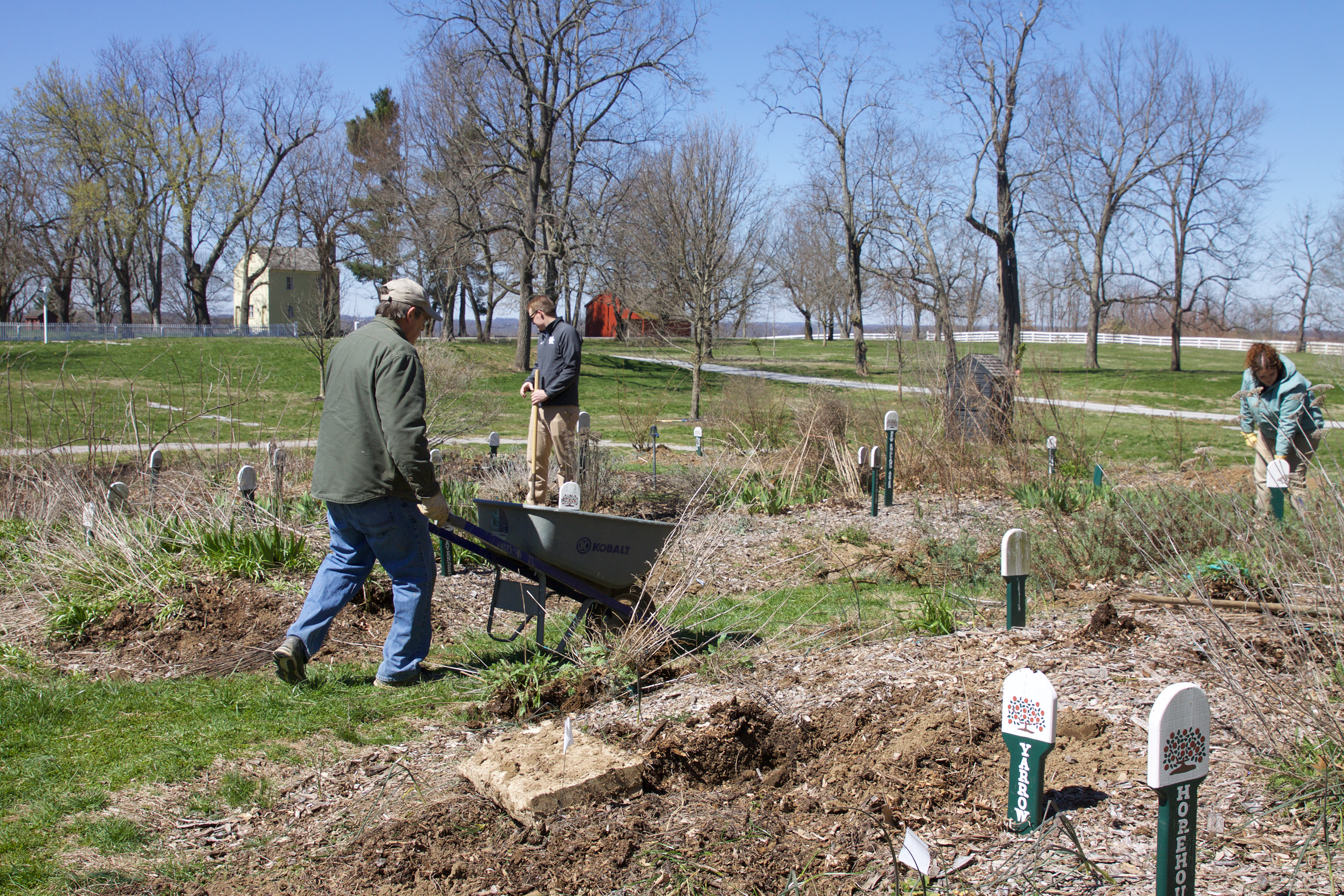
Q: Did you learn anything fun during this process? What do you like to tell the guests about the herb garden?
A: Going into this project I had a limited knowledge of herbs—so I learned quite a bit. First, the Shakers would have only kept plants (herbs) that were of use, so nothing simply for decorative purposes as some people do today. Also, I learned that herbs have all kinds of uses: medicines, foods and to provide coloring for clothes. I’ll definitely be using some of these facts on my daily tours!
Jacob Glover, Program Specialist
Q: Did you learn anything fun during this process? What do you like to tell the guests about the herb garden?
A: The project was exciting to participate in! I especially enjoyed learning about the structure and space requirements of each plant as they were arranged in each bed. I enjoyed picking up some of the Shaker terminology for the herb gardens, such as the “physic garden” to describe the medicinal herb beds, the “sauce garden” in reference to the culinary beds and the “dye garden” for creating natural dyes. I am eager to see the garden come to life after learning about the many native plants we transplanted and additional native species to be planted in the future!
Rebekah Roberts, Program Specialist
Q: How long have we had an herb garden at Shaker Village? Did the Shakers have an herb garden?
A: Initial funding for the Centre Family garden was provided by the Glenview Garden Club of Louisville, with development for the project beginning as early as 1968. Two years after the garden’s initial installation in 1977, the garden was reconstructed to replicate a design found in the Shakers’ journals, though on a smaller scale. While this particular herb garden has been situated on the west side of Centre Family since the 1970s, the original location of Centre Family’s medicinal garden is unknown.
Q: What did the Shakers use herbs for?
A: The Shakers used herbs in a variety of capacities, but, primarily, those grown in their gardens and gathered from their property were garnered for medicinal use within the community. Beyond Pleasant Hill though, the Shakers marketed their dried and pressed herbs in the form of powders, pills and extracts—often selling them as far south as New Orleans.
Emalee Krulish, Archivist
 With the rainy Derby season upon us, it’s hard to think that Summer is just around the corner. We’re excited for a lot of things this Summer at Shaker Village, but it’s hard to top summer camp. We think our staff looks forward to it just as much as the kids do! Here’s what one of our camp counselors had to say about their camp experience last year:
With the rainy Derby season upon us, it’s hard to think that Summer is just around the corner. We’re excited for a lot of things this Summer at Shaker Village, but it’s hard to top summer camp. We think our staff looks forward to it just as much as the kids do! Here’s what one of our camp counselors had to say about their camp experience last year: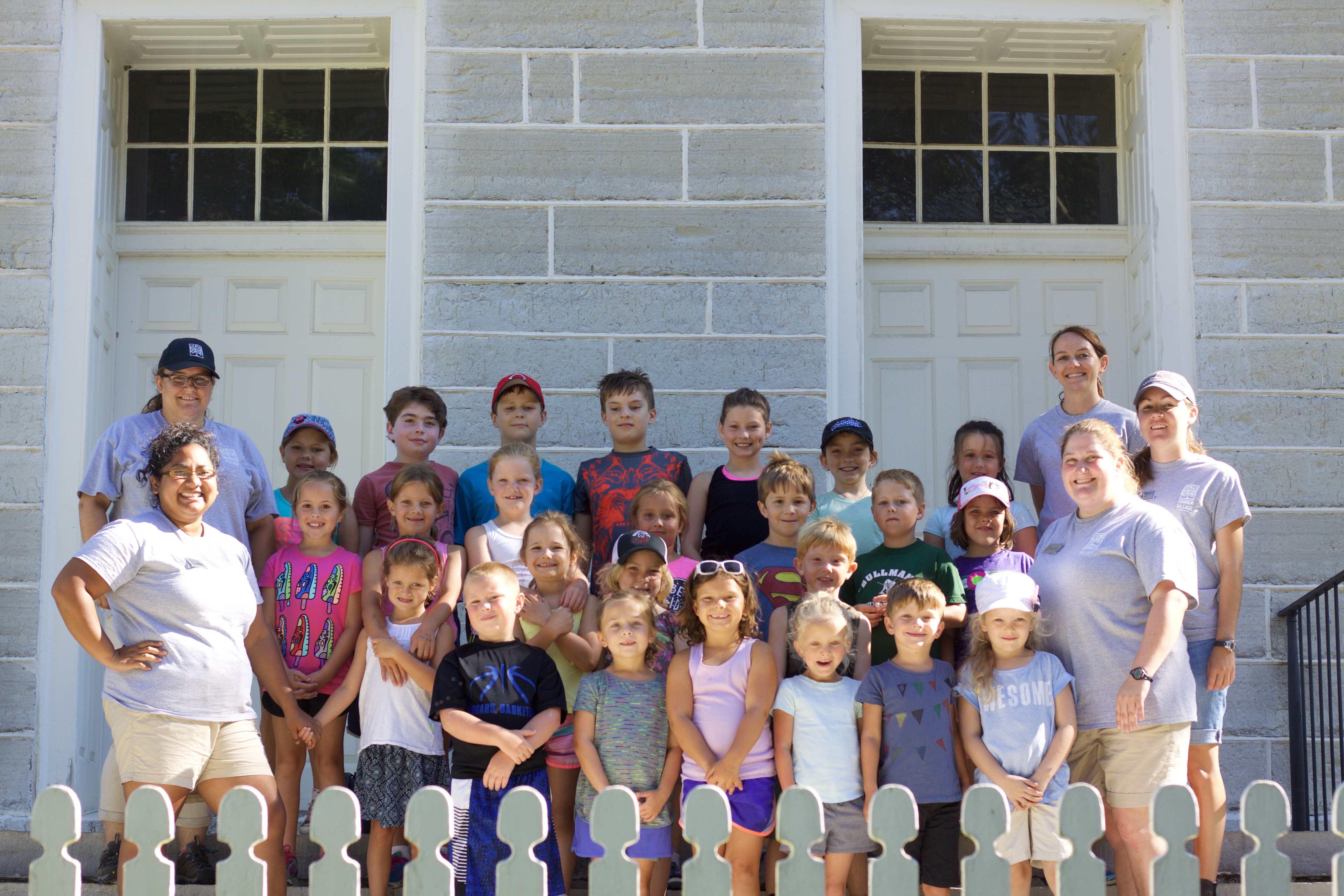 I think it’s safe to say everyone had a good time. We can’t wait to explore again this year with a new bunch of kids (and some old friends we hope)! Sorry parents, but as of now, our summer camp is for KIDS only! If you are looking for a getaway, check out the Kids Stay, Play and Eat Free package at The Inn this summer. Consider staying the week at Shaker Village and exploring on your own, while the kids enjoy camp.
I think it’s safe to say everyone had a good time. We can’t wait to explore again this year with a new bunch of kids (and some old friends we hope)! Sorry parents, but as of now, our summer camp is for KIDS only! If you are looking for a getaway, check out the Kids Stay, Play and Eat Free package at The Inn this summer. Consider staying the week at Shaker Village and exploring on your own, while the kids enjoy camp.

